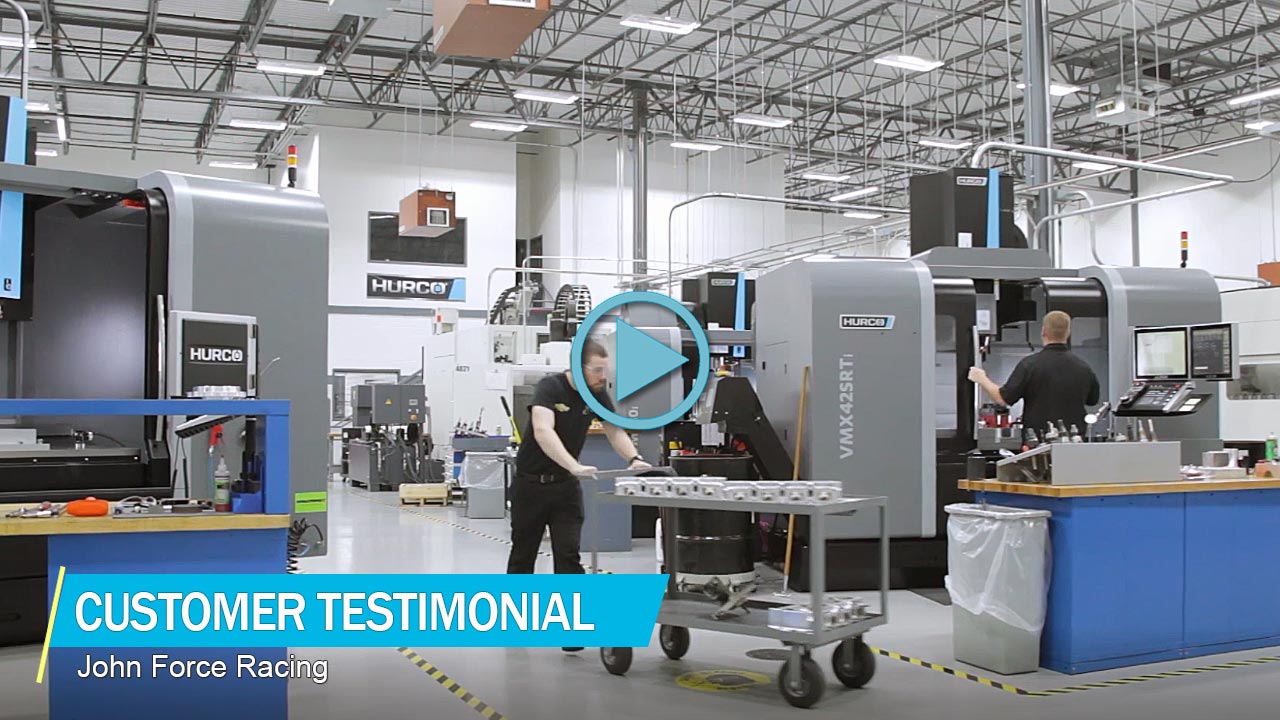Founded in 1987 as a mouldmaker and subcontract machinist specialising in wire and spark erosion and manual milling, RST Engineering, Leighton Buzzard, installed a Hurco Hawk 30 CNC mill in 1998 to speed electrode production and other prismatic machining jobs.
 |
| Hurco 5 Axis VMX30U in action at RST Engineering |
It was not until 2007 that the company traded in the Hawk for a 3-axis Hurco VM2 vertical machining centre, taking advantage of automatic tool change to fulfill contracts moreeconomically for increasingly complex aerospace, medical and motorsport components. Two years later, owner Jason Taylor and his team progressed to 5-axis machining on a HurcoVMX30U machining centre, with very positive results. It was bought initially to reduce production costs when the manufacture of prototype housings for aircraft on the VM2 moved to large batch runs.
The circuit board housings are 200 mm square and have to be machined from aluminium billets on six sides to dimensional tolerances within 15 microns. In the process, over 90 per cent of the material is removed.
When the part was milled on the 3-axis machine, five sides were completed in eight to 10 hours, including repeated manual refixturing. The part is now machined in around three hours on the 5-axis Hurco. As only one additional set-up is needed for machining the sixth face, the component is produced in just two milling operations followed by sparking.
“This takes a fraction of the time that would be needed on our Vero VISI 3D CAD/CAM system, which is freed for more complex programming. “A further benefit is that the setter-operator does not have to walk back to the office to edit a program to adjust a tool, for example – it can be easily done on the shop floor using the control’s WinMax software.
 |
| 5 Axis machining of an aluminium clock component on the VMX30U |
”He is particularly impressed with the NC-Merge feature within WinMax, which allows complex parts of a program to be generated off-line using a CAD/CAM system and imported into theUltimax control for the remainder to be completed, taking advantage of the best of both systems.
There are occasions when this strategy allows a more efficient program to be written than would be possible using off-line CAD/CAM alone. One recent example was a 3D part that needed holes drilled in it after rotation. They would have had to be drilled straight to depth, whereas pecking cycles were easily added in WinMax.
Other 5-axis jobs machined on the VMX30U include plastic clock parts and a wrist support plate in titanium, both of which required fully interpolative 5-axis machining. Mr Taylor suggests that while this is useful, allowing RST to take on extra work that it could not have tackled before, the main benefit of 5-axis is to reduce set-ups when machining components on five or six sides.
“Every time you want to mill a sharp corner in a pocket to replace a radius, or drill a hole at a compound angle, it would involve another set-up,” he said. “This not only adds production cost and risks introducing accumulative errors, but is monotonous for our operators if there are, say, 50- or 100-off to produce.
Automatic 5-axis positioning in-cycle avoids the potential problem of an operator’s attention wandering and the consequent risk of scrapped parts.”
A good example of a contract where 5-axis benefits are considerable is the production of components for high-voltage electrical switchgear. They were previously produced in three operations but are now machined in one hit on the VMX30U. In August 2010, 25-off of each of 10 varieties were produced and the customer wants a further 175-off. That will be 4,000 set-ups saved.
In RST’s case, with its EDM specialism, the 5-axis Hurco machine is assisting in the production of copper electrodes, which are also becoming more complex. Accuracy of ± 6 microns is easily held on the VMX30U, which Mr Taylor describes as rigid, reliable and repeatable.
In summary, he used the familiar expression: ‘how did we do without 5-axis machining before’. In his opinion, it is becoming essential to compete for the production of all but the simplest of parts. These tend to be manufactured overseas now unless volumes are low, in which case there is little money to be made anyway.
He finds that designers these days are constantly using the power of their modern CAD/CAM systems to push the barriers of component complexity, which again dictates a move to 5-axis machining.
Mr Taylor also said that people using 3-axis machining centres should not be put off by thinking that 5-axis machining is too complex. It took only two days’ training to become conversant with programming 5-sided milling and drilling routines on the Ultimax control.

